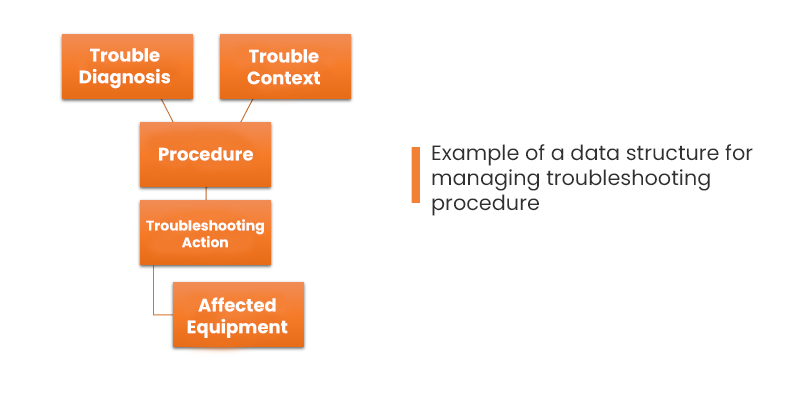Intelligent TROUBLE SHOOTING System
Troubleshooting is a process based on the logical and systematic identification and resolution of problems. This process is a formalized procedure that identifies the root causes of a malfunction by eliminating known causes. Today these processes are implemented during the design of the systems concerned. However, these systems can have lifespans of several decades, and it is understandably complicated to anticipate the root causes of future breakdowns.

Structured management of procedures
Nowadays, troubleshooting procedures are often cumbersome. The most complex systems are made up of thousands of elements, most of which can be the cause of more failure symptoms. Moreover, the appearance of multiple symptoms or their how and where they appear can have a different meaning than that of a single symptom. This is difficult to deal with in a “flat” document. The first approach of an intelligent trouble shooting system is to build a repository structured in unitary elements linked together. Thus one can differentiate procedures according to the appearance of a set of symptoms in a given context.

Intelligence is about continuing to learn
Troubleshooting operations can be carried out at various locations: at the factory, at the maintenance station or at the place of use. In order to effectively adapt to these situations, it is essential to centralize all Troubleshooting Experience Returns. The user must be able to share their knowledge, for example by sending a comment to the author of a procedure to report an improvement or a possible error. The user should also be able to indicate whether the problem has been resolved and rate the quality of the procedure. This feedback is stored in a central system and can be used to improve troubleshooting guides as well as to improve product design.
Finally, with the knowledge of previous situations, it is possible to produce probability calculations utilizing the procedure’s actions to optimize their order and speed up the problem’s resolution, taking into account all the inputs of the problem such as time available, cost of actions, and tools available.

Facilitate autonomous decision making
An intelligent troubleshooting tool must be more agile and visual than heavy documentation, more intuitive than troubleshooting manuals, and must link to other interesting business elements
It is therefore important to choose a structuring software tool, adaptable to your business in order to offer a contextualized troubleshooting guide that takes into account past incidents. Thus, the user will be able to make the best decision, taking into account various constraints such as the tools available or the number of spare parts in stock. Once the causes have been identified, the user can easily resolve the problem by clicking on the answers proposed by the system.With a well-designed procedure, the user benefits from the knowledge of an expert and can solve the problem themself, thus increasing productivity.
The company BASSETTI with its Technical Expertise Management is committed to implementing methods, tools and IT processes to structure, archive and disseminate this knowledge with high added value within the company.

